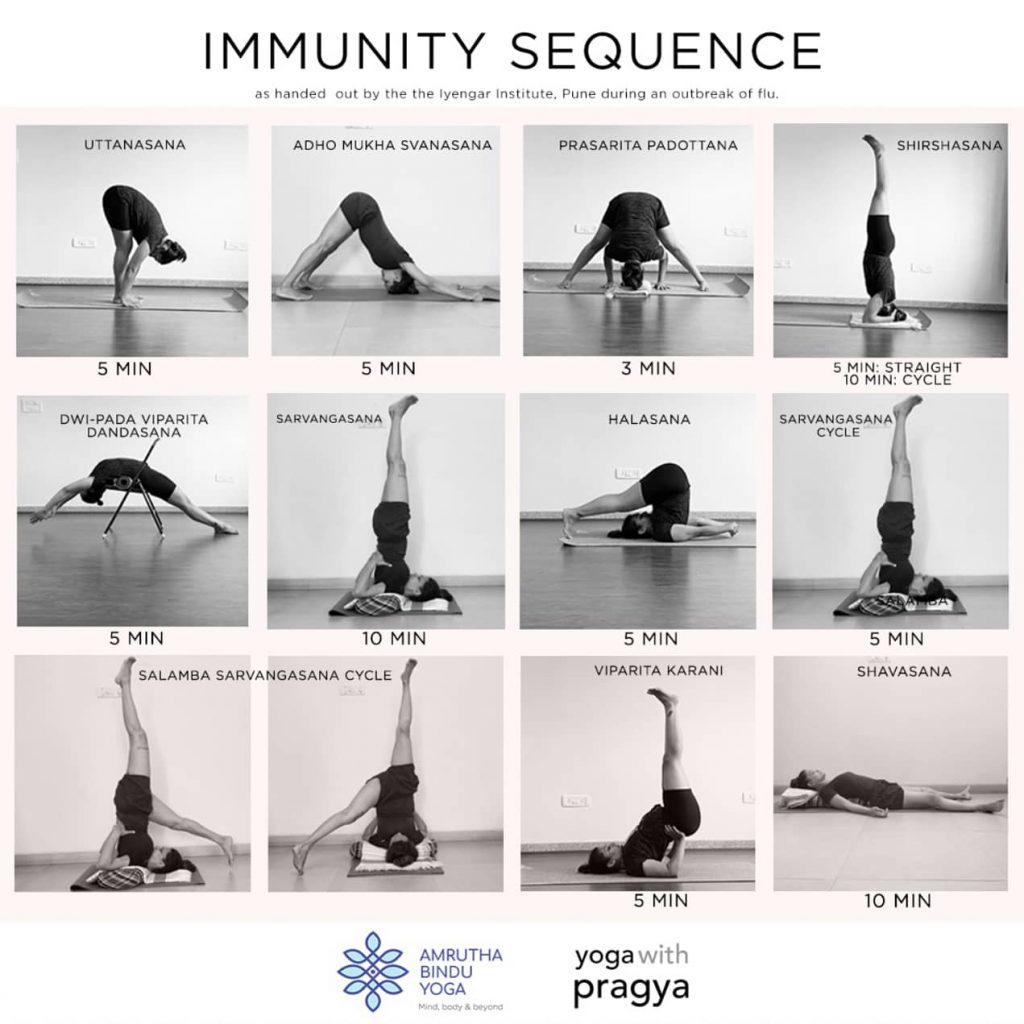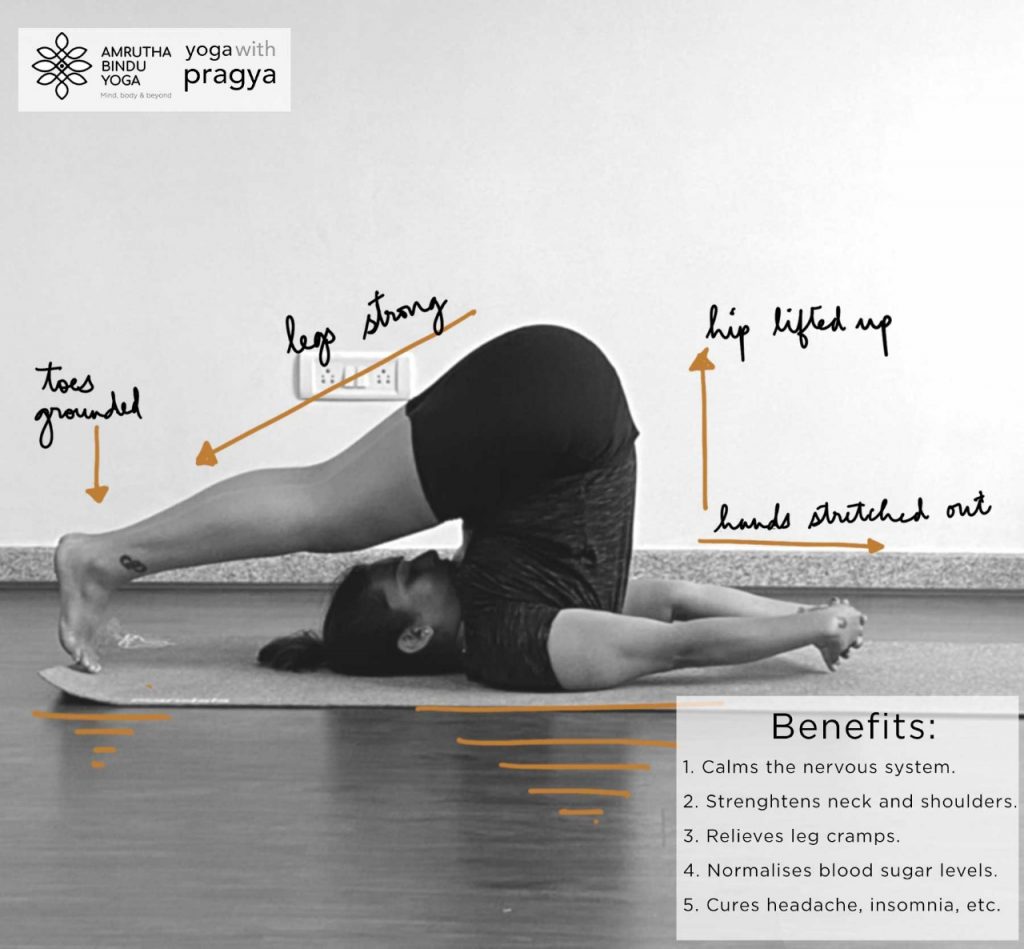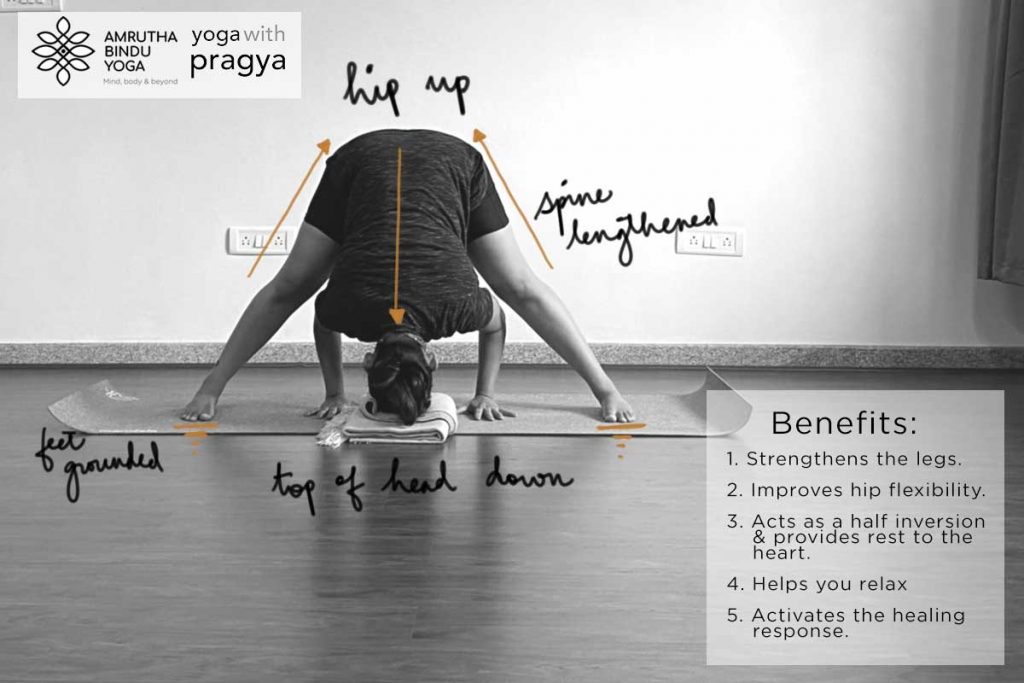When Women’s Day rolls around we talk about women. Strength, equality, acceptance, rights. This year I wanted to talk about something more relevant. Immunity. Immunity to ‘what will people say/think/do’. Immunity to unrealistic expectations. Immunity to trying to please everyone. Immunity to self-doubt, self-sabotage.
The key to fighting any kind of external attack is your immunity. The higher your immunity levels, the less likely you are to fall prey to pesky germs.
I suggested a collaboration to my friend Medha of Amruta Bindu Yoga a day before Women’s Day. Within two minutes we were ready. The deadly Corona virus spreading like wildfire across planet earth, we decided to focus on how yoga can help. Yoga’s positive impact on boosting your immunity is proven and well documented. A regular yoga practice helps in lowering your stress hormones and stimulates the lymphatic system (which eliminates toxins from your body). Inversions (asanas where your head is below the level of your heart) help in increasing blood circulation. This increased circulation helps in taking oxygenated blood to your organs, which helps in keeping the organs healthy.
A couple of days ago I came across a yoga sequence to strengthen the immune system, designed by BKS Iyengar. It’s being widely circulated on Instagram and I came across it on the IYNAUS page. Medha and I decided to share the sequence with our followers.

This sequence was created by BKS Iyengar to boost immunity to fortify the body against the invasion of germs, bacteria and viruses. Fun fact: it’s Medha and I performing the asanas in the images.
Daily practice is a challenge, specially when you’re practicing solo. We decided to help by putting together this checklist for you. You can print this out and place it where you’re likely to see it, be it your practice space, your dresser, your bathroom mirror, in front of your desk etc. It’s a reminder to you that all of us need a little help with our yoga practice. You can also download the Daily Yoga Practice Checklist by clicking on the ‘Download’ button at the end of the blog.
Over the next few days we’re going to be discussing how each of these asanas improve your immunity. We’ll discuss the asanas at length, giving you new insight into them. Please reach out to any of us (on Instagram/Facebook) with your queries and we will help you out! We’re incredibly excited about this challenge and hope it really makes a difference to you.
[ddownload id=”8170″] the Daily Yoga Practice Checklist.
Follow Amrutha Bindu Yoga here.
Follow Medha Bhaskar here.
Follow me (Pragya Bhatt) here.
You can read about the individual asanas below:
- Uttanasana
- Adhomukha svanasana
- Prasarita Padottanasana
- Sirsasana
- Dwi pada Viparita Dandasana
- Halasana
- Sarvangasana
- Viparita Karani
- Savasana



